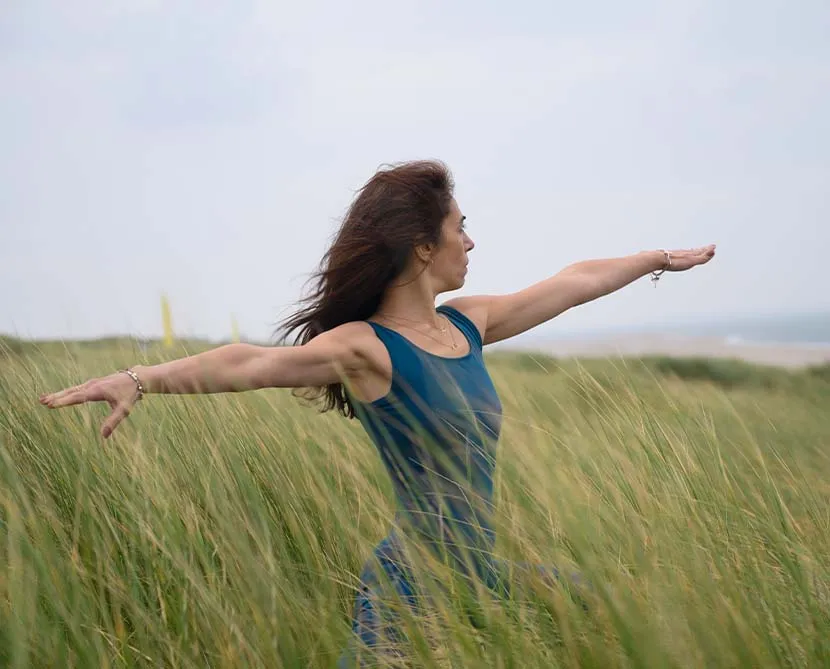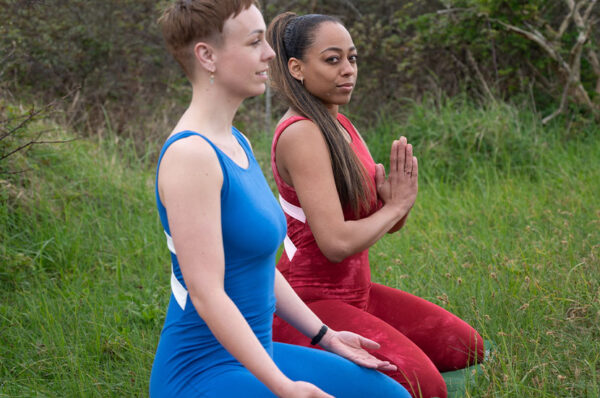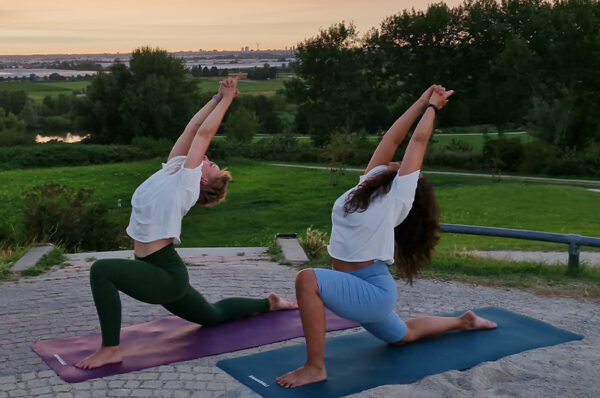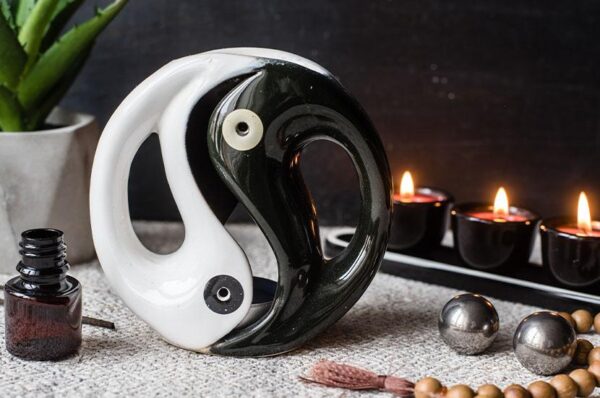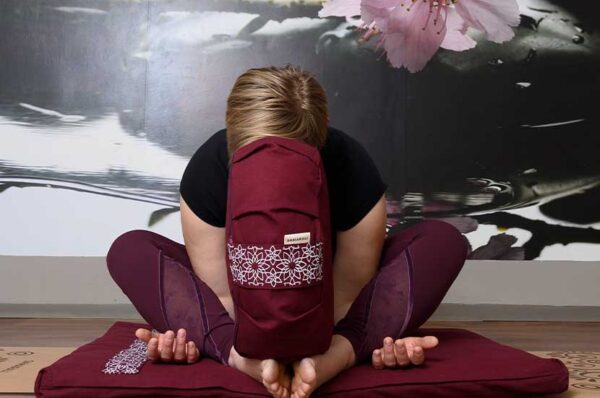What is Ayurveda and what is its link with Yoga? Do I need to know about Ayurveda to practice Yoga? What is the Dosha system?
The subject matter is very broad, and a blog post is not sufficient to go deep and answer all questions, but hopefully, it will give you some basic knowledge and the input to continue exploring and studying this ancient and powerful self-healing system.
Ayurveda and its meaning
The word Ayurveda comes from Sanskrit, and means “science of life”. Ayu means “life” or “daily living”, and Veda is “knowing”.
It is the knowledge of how to maintain health in daily life, and it’s considered the oldest known form of health care in the world.
Ayurveda was first recorded in the Vedas, the oldest layer of Sanskrit literature and the oldest scriptures of Hinduism.
This holistic healing system was developed alongside Yoga in India. Its goal is to achieve health by working towards balance and harmony with nature.

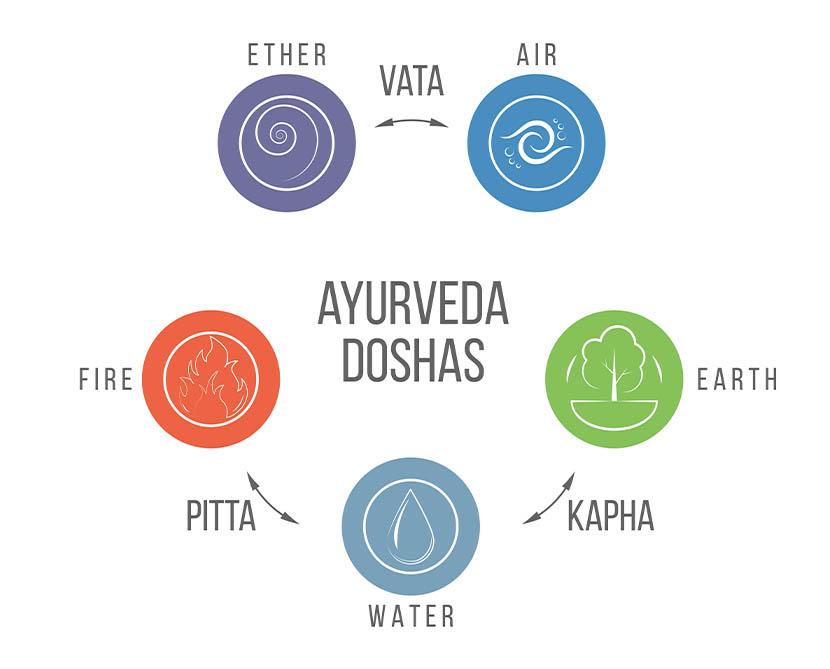
The trinity of Life
Ayurveda, Yoga, and Tantra are the ancient life disciplines that have been practiced in India for centuries.
Yoga is the science of the union of the Divine with Truth, Tantra is the method of controlling the energy that creates the union with Truth, and Ayurveda is the science of life that can be practiced by anyone for the achievement of good health.
The purpose of each practice is to help the individual to achieve longevity, rejuvenation, and self-realization.
According to Dr. Vasant Lad, a practitioner, and professor of Ayurvedic Medicine for more than 50 years, Ayurveda is the foundation, Yoga is the body and Tantra is the head.
They form an interdependent trinity of life, meaning our health depends on the practice of these three.
The Five Elements
In the beginning, the world existed in an unmanifested state of consciousness, an energy that manifested into five elements: Ether, Air, Fire, Water, and Earth.
From that state, the subtle vibrations of the cosmic sound ‘aum’ manifested, and from that vibration first appeared the Ether element. Ether originated Air and Fire, because of its movement and friction.
From Fire, certain elements liquified and generated the Water element, and then solidified to form the molecules of Earth.
From Earth, all organic living beings and inorganic substances were created.
These five basic elements exist in all matter, and because they were generated from Cosmic Consciousness, energy and matter are one.
In our body, the five elements correspond to our five senses:
- Ether is related to hearing → the sensory organ is the ear and it expresses itself through speech.
- Air is related to the sense of touch → the sensory organ is the skin and the organ of action is the hand.
- Fire is related to vision → the sensory organ and organ of action are the eyes.
- Water is related to the organ of taste → the sensory organ is the tongue.
- Earth is related to the sense of smell → the sensory organ is the nose.
When these elements are in balance, we experience a harmonious relationship with the cosmic consciousness, and that’s the aim of Ayurveda.
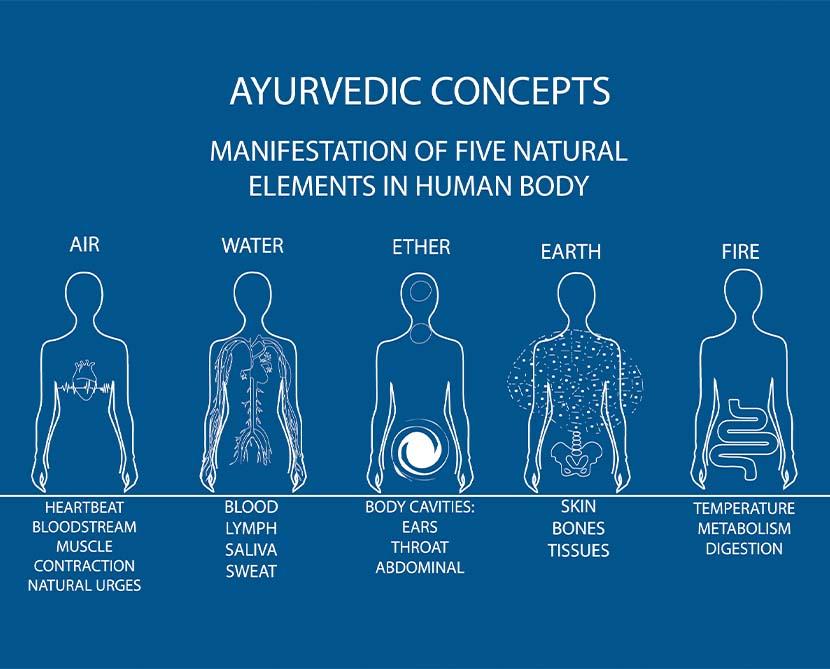
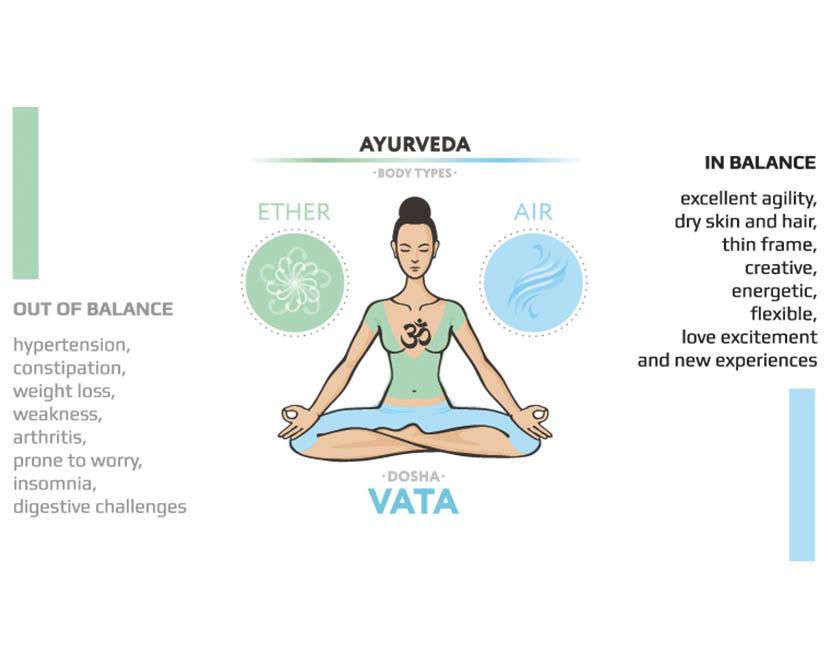
The Tridosha System
The five elements manifest in the human body via three fundamental energies or principles which govern the function of our bodies on the physical and emotional levels.
Each individual has a unique balance of all three of these energies. Some people will be predominant in one while others are a mixture of two or more.
When they are out of balance, they contribute to causing diseases.
According to Ayurveda, the first requirement for healing is to understand the tridosha system.
Vata
Vata Dosha is made of air and ether. It governs breathing, blinking of eyelids, movements in the muscles and tissues, and all expansion and contraction.
Vata also governs feelings such as nervousness, anxiety, and pain. People of Vata constitution have bodies that tend to be light, their bones thin, and their skin and hair dry.
They often move and speak quickly. When out of balance, they may lose weight, become constipated, and have weakness in their immune and nervous systems.
They tend to be talkative, enthusiastic, creative, flexible, and energetic. Yet, when out of balance they may also become easily confused and overwhelmed, have difficulty focusing and making decisions, and have trouble sleeping.
This becomes more apparent when they are under stress. Emotionally they are challenged by cool emotions like worry, fear, and anxiety.
Pitta
Pitta Dosha is made of fire and water, with fire more predominant. It governs digestion, absorption, assimilation, nutrition, metabolism, intelligence, and understanding.
People of the Pitta constitution tend to feel warm and have somewhat oily skin, penetrating eyes, and sharp features. They tend to have moderate weights and good musculature.
When out of balance they tend toward diarrhea, infections, skin rashes, and weakness in the liver, spleen, and blood.
They are very intelligent and sharp and tend to be good orators. They have emotional tendencies toward hate, anger, and jealousy.
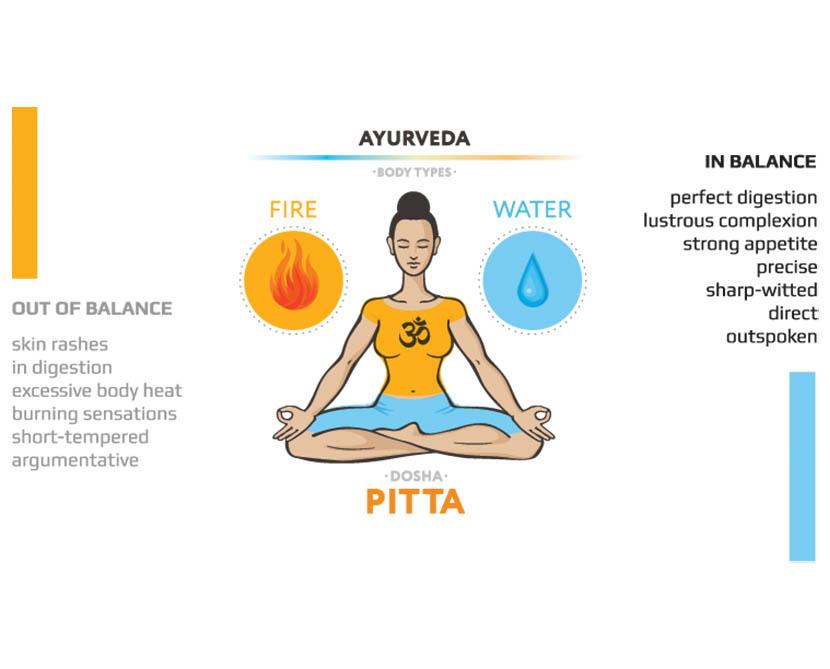
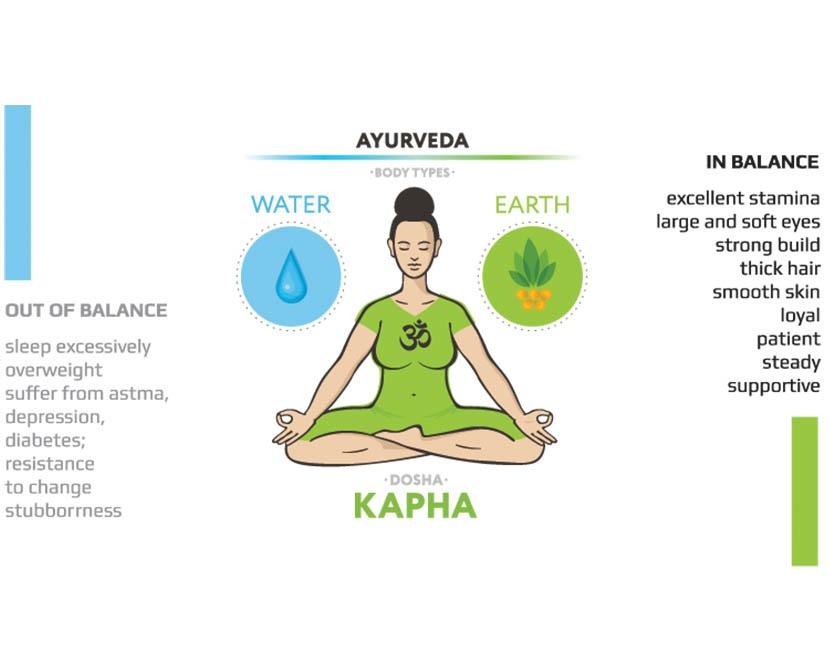
Kapha
Kapha Dosha is made of water and earth. It maintains body resistance, it gives biological strength, vigor, and stability.
People of Kapha constitution manifest heavy bones, low metabolism, and large, stocky frames. When out of balance, Kapha individuals are prone to gaining weight and tend to have weaknesses in their lungs and sinuses where there is an accumulation of mucous.
The heavy, stable nature of Kapha reflects a stable personality that is not prone to quick fluctuations. Those with a Kapha nature handle stress very well, often not even noticing that it exists.
They don’t like change, are generally conservative, and would prefer to keep things just the way they are.
We are all a combination of the three doshic energies. Pitta is our metabolism, Kapha is our structure, and Vata is the mobility that brings action and life into creation. Without all three energies, we simply could not exist.
Curious to find out your unique constitution? Do a Dosha Test. You can always consult a Clinical Ayurvedic Specialist if you want to know more.
They will evaluate you from a physical, emotional, and spiritual point of view to identify your body’s balance and imbalance of energies.
In case of imbalance, they will suggest a treatment program that includes an appropriate diet, herbs, aromas, colors, yoga, and meditation.
Ayurveda and yoga
In India, Ayurveda and Yoga are considered sister sciences. You study first Ayurveda because it’s the science of the body, and only when the body has become fit you are ready to study the spiritual science of yoga.
The benefits of yogic practices help to bring balance to the neurohormones and the metabolism and improve the endocrine metabolism, providing strengthening against stress.
Asana and movements move energies that have accumulated and stagnated in the energy centers, so based on our constitution and imbalances, Ayurveda indicates which type of yoga is suitable for each person.
For example, a Pitta person should not perform a headstand longer than one minute or they might suffer mental disorientation.
A Vata person should not perform shoulder stands for a long period because this pose involves too much weight on the seventh cervical vertebra, which is very sensitive, and the delicate bone structure of Vata may cause a shift in the spinal column.
A Kapha person should not perform the hidden lotus pose for an extended time because the posture causes direct pressure on the adrenal glands.


Balancing VATA during the fall season
Every season has a predominant dosha, and autumn gathers all the qualities of Vata: the leaves on the trees start to dry out, and the weather becomes colder and windier.
We start feeling colder, and less grounded, and our skin and hairs turn dryer, even if Vata is not our predominant constitution.
To keep us grounded and balanced we can add small rituals to our daily routine and focus on more grounded asana.
1. Avoid stimulating foods and drinks such as pure dark chocolate, coffee, black tea, and other caffeïne rich aliments because they inflame the nervous system, which is Vata’s system. Instead, drink calming drinks such as camomille tea, lavender tea, and fresh ginger tea.
2. Do a daily warm sesame oil massage before showering.
3. Wear rich and warm colors, reds, yellows, and oranges. Burn warming, grounding, sweet perfume oils (such as lavender).
4. Move slower, talk slower, eat slower, and do one thing at a time, avoiding multitasking. Practice slow Nadi Shodhana pranayama and slow warming yoga asanas which are grounding and strengthening in a warm room. Restorative yoga, Shavasana, and Yoga Nidra are recommended.
Marianna has been practicing Yoga for more than eight years, and in 2020
she completed the 200h Yoga Teacher Training in Vinyasa at YogaMoves in Utrecht.
She is passionate about sharing Yoga with others, living more sustainably,
and traveling. Here is her INSTAGRAM page.
